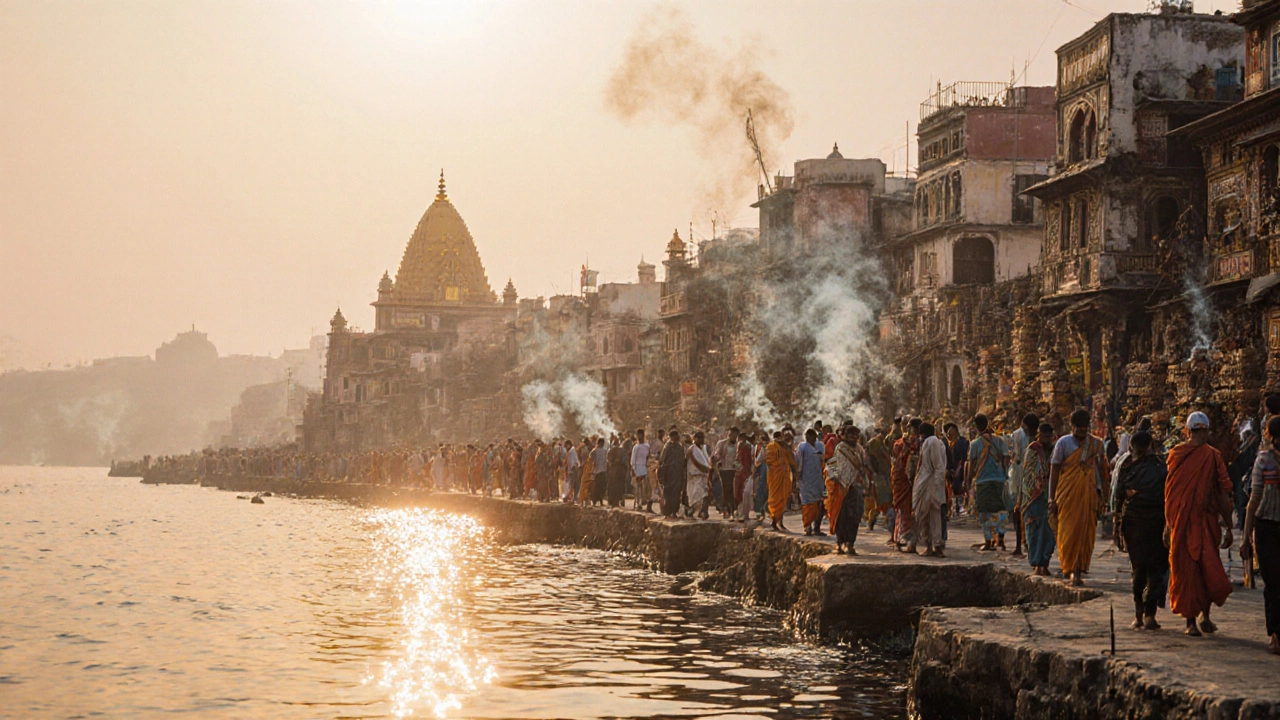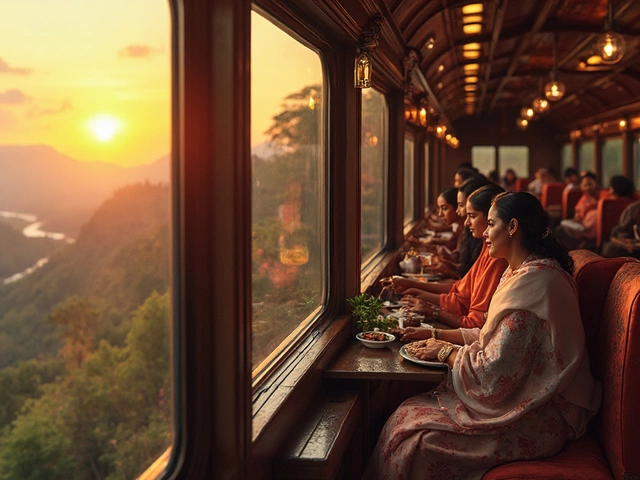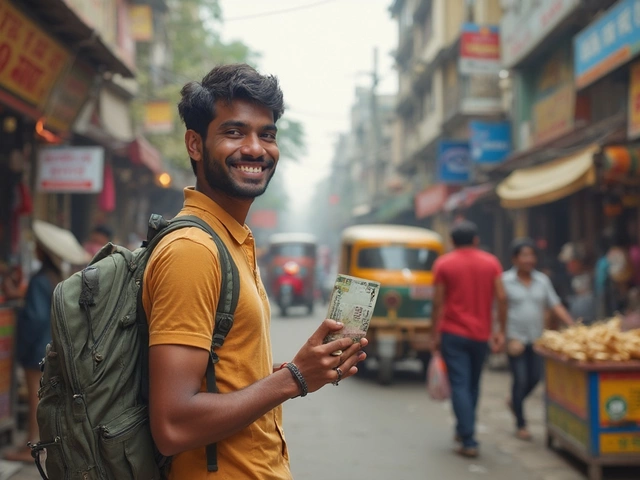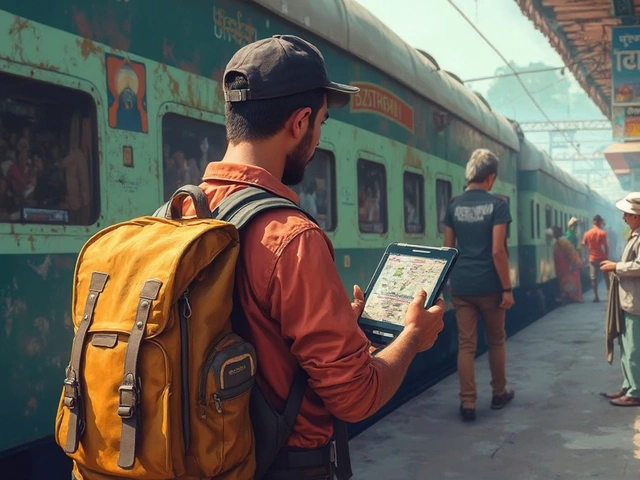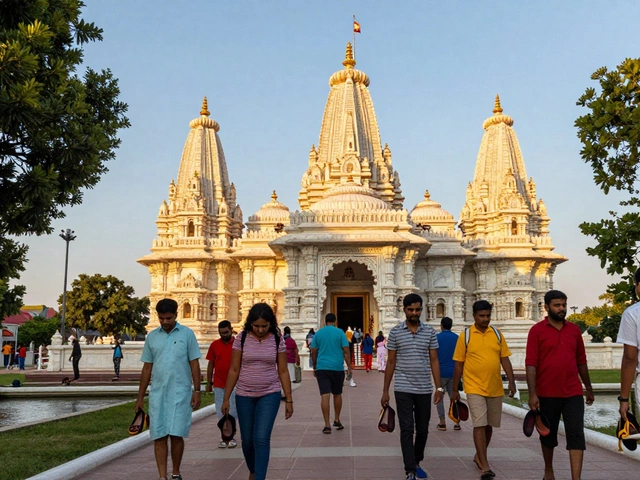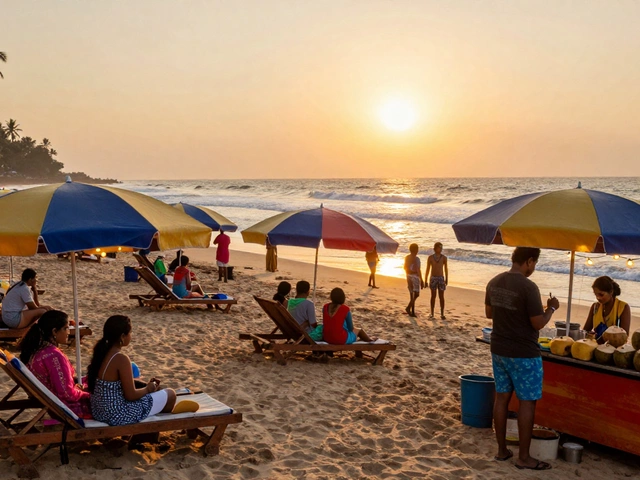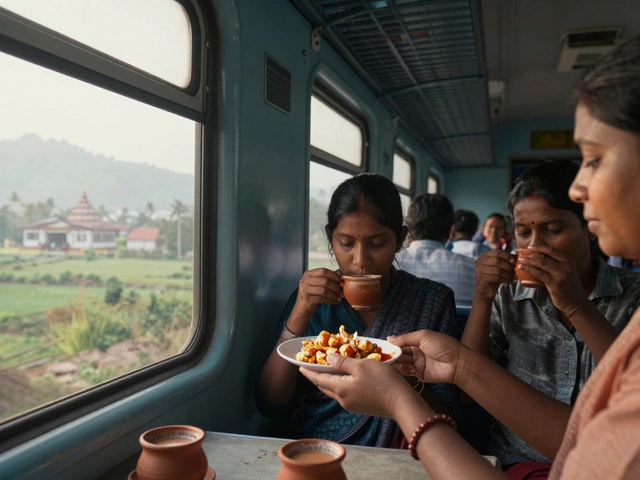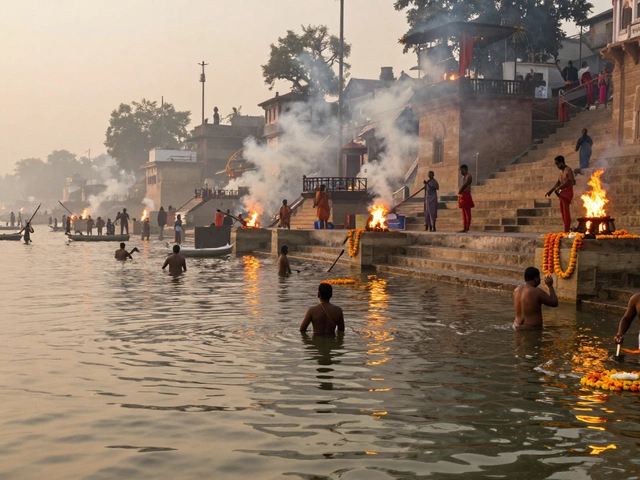When you think of temples in India, you don’t just picture stone and spires-you think of chants at dawn, incense curling into the sky, and crowds moving in slow, sacred circles. But which city actually has the most temples? It’s not the one you might guess. And the answer isn’t just about numbers-it’s about history, devotion, and how religion shaped entire cities.
Varanasi: The Heartbeat of Hindu Pilgrimage
Varanasi, on the banks of the Ganges, isn’t just a city with temples-it’s a temple itself. Over 2,000 temples dot its narrow alleys, many tucked between homes, shops, and ghats. The Kashi Vishwanath Temple, one of the twelve Jyotirlingas, draws millions each year. But it’s the smaller shrines-the ones with no nameplates, just a painted door and a bell-that tell the real story. Locals say if you walk 100 steps in Varanasi, you’ll pass at least one deity. That’s not exaggeration. A 2023 survey by the Uttar Pradesh Archaeological Department counted 2,147 registered temples, and that doesn’t include family shrines in courtyards or hidden niches in old havelis.
What makes Varanasi unique isn’t just quantity. It’s density. You can stand on Dashashwamedh Ghat and see five temples within a 300-meter radius. Pilgrims come not just to pray, but to die here. The belief that dying in Varanasi grants moksha means temples are woven into daily life-not as tourist stops, but as living anchors.
Bhubaneswar: The Temple City of Odisha
If Varanasi is the soul of devotion, Bhubaneswar is its architectural masterpiece. Known as the ‘Temple City of India,’ it has over 700 temples, mostly from the 7th to 12th centuries. Unlike Varanasi’s chaotic sprawl, Bhubaneswar’s temples are concentrated in a compact area called the ‘Temple Triangle.’ The Lingaraja Temple, built in the 11th century, stands 55 meters tall with intricate carvings that tell stories of gods and kings. Nearby, the Mukteshvara Temple is called the ‘Gem of Odisha’ for its delicate stone latticework.
What’s surprising is how well-preserved they are. Most were never abandoned. Daily rituals never stopped. Even today, the same families serve as temple priests, passing down duties through generations. A 2024 report by the Archaeological Survey of India confirmed 723 temples in Bhubaneswar’s urban core-more than any other Indian city outside Varanasi.
Madurai: The Temple That Rules a City
In Tamil Nadu, Madurai’s Meenakshi Amman Temple isn’t just a temple-it’s the city’s heartbeat. The entire layout of Madurai was designed around this temple, with roads radiating out like spokes on a wheel. The complex has 14 gopurams (towering gateways), 33,000 sculptures, and over 50 shrines inside its walls. But beyond the main complex, the city holds another 300+ smaller temples. Many are dedicated to local deities, village guardians, or even historical queens.
Madurai’s temple culture is alive in its rhythms. The daily rituals-morning abhishekam, midday offerings, evening aarti-are timed like a city clock. Even non-Hindus walk through the corridors not as tourists, but as quiet observers of a living tradition. The city’s population of 1.5 million means one temple for every 3,000 people. That’s higher density than any other major Indian city.
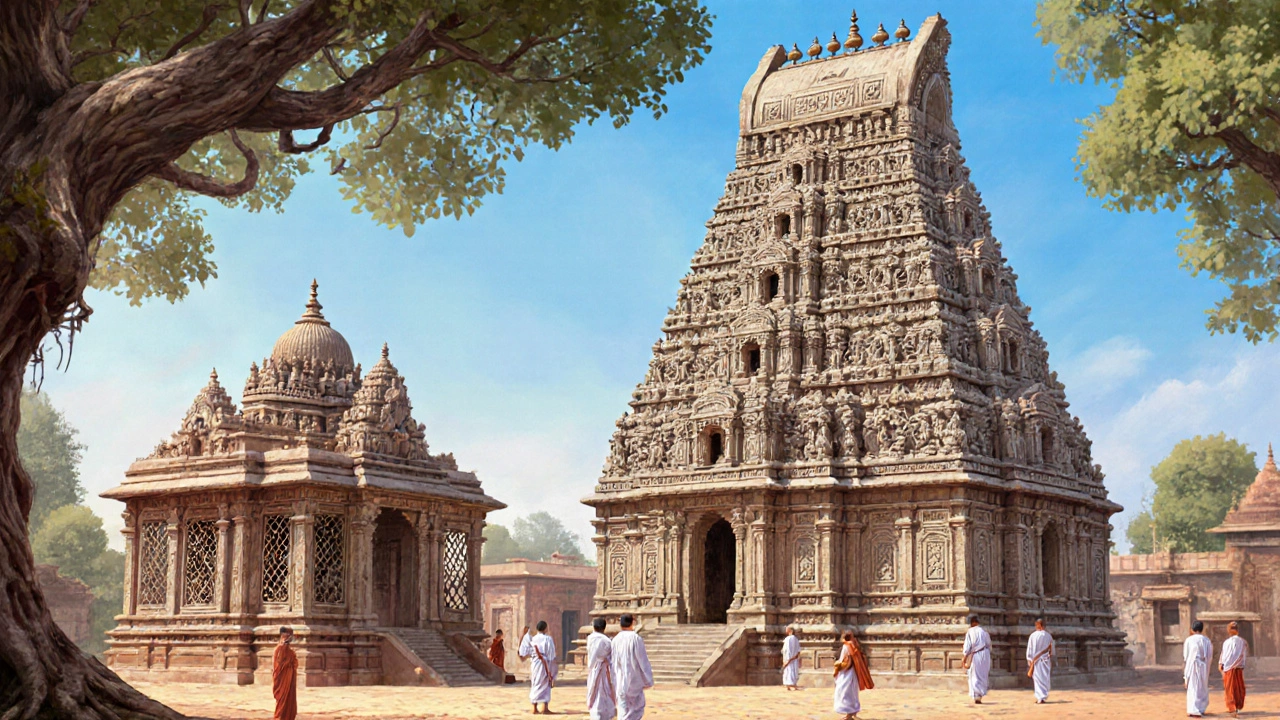
Other Contenders: How Do They Compare?
Other cities have impressive temple counts, but they don’t match the scale.
- Puri has about 500 temples, centered around the Jagannath Temple. But most are small, and many lie outside the city center.
- Kanchipuram claims over 1,000 temples, but many are ruins or shrines in villages surrounding the city. Only about 200 are active within city limits.
- Ahmedabad has a strong Jain temple presence, with over 300, but they’re mostly from the last 500 years and lack the ancient architectural weight.
- Mathura-Vrindavan together have over 5,000 temples, but they’re spread across two separate towns. Neither individually comes close to Varanasi’s concentration.
So while some places have more temples in total, none combine scale, density, and daily religious activity like Varanasi and Bhubaneswar.
Why Does Temple Count Matter?
It’s not a competition. But understanding which city has the most temples helps you plan better. If you want to walk through a living temple city where rituals never pause, Varanasi is unmatched. If you want to see ancient stone artistry in perfect condition, Bhubaneswar is your destination. Madurai offers color, sound, and ritual drama on a grand scale.
For temple tours in India, the number tells you where to go. But the feeling tells you why you stay. In Varanasi, you’ll see a woman lighting a diya for her father who died last year. In Bhubaneswar, you’ll watch a priest clean a 1,200-year-old lingam with milk and sandalwood. In Madurai, you’ll hear a chorus of bells as a procession carries the goddess through the streets.
These aren’t tourist attractions. They’re the rhythm of life.
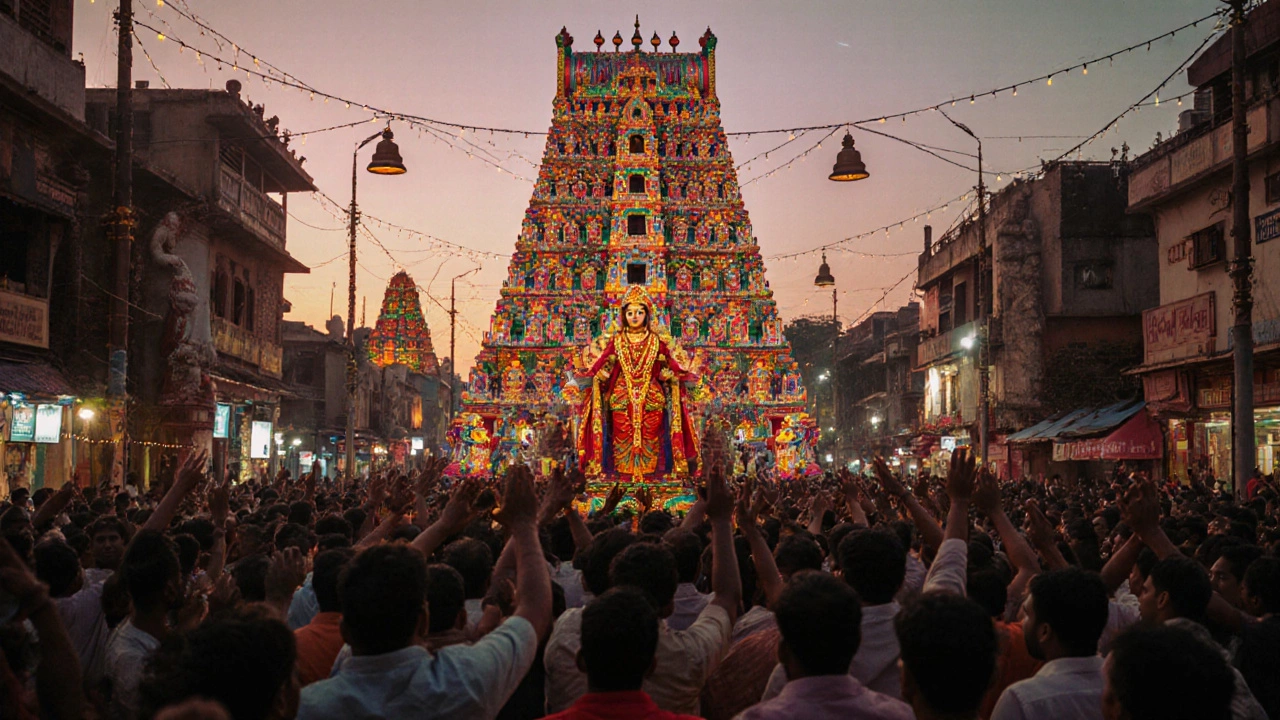
Planning Your Temple Tour: What to Know
If you’re planning a temple tour in India, here’s what actually matters:
- Timing: Most temples open at 5 a.m. and close by 12 p.m., then reopen at 4 p.m. until 9 p.m. Don’t show up at noon-many shut for lunch.
- Dress code: No shorts, no sleeveless tops. In Varanasi and Madurai, even men wear dhotis or long pants. Carry a scarf-it’s often required to cover shoulders.
- Footwear: Leave shoes outside. Many temples have storage, but bring a small bag to carry your sandals.
- Photography: Some temples ban photos inside sanctums. Always ask. In Bhubaneswar, you’ll see signs in Odia and English.
- Guides: Don’t hire random guys near the gate. Use temple-approved guides. In Varanasi, the Kashi Vishwanath Temple has an official visitor center.
Most importantly-don’t rush. Spend at least half a day in one temple complex. Sit on the steps. Watch. Listen. That’s when the real experience begins.
Final Answer: Who Has the Most Temples?
Varanasi has the most temples in India-with over 2,100 registered and countless more unlisted. It’s not just the count. It’s how deeply the temples are embedded in every corner of life. Bhubaneswar is a close second, with its stunning, preserved heritage. Madurai holds its own with ritual intensity and architectural grandeur.
For temple tours in India, choose Varanasi if you want soul. Choose Bhubaneswar if you want art. Choose Madurai if you want drama. But no matter where you go, remember: these aren’t ruins. They’re alive.
Which Indian city has the highest number of temples?
Varanasi has the highest number of temples in India, with over 2,100 officially registered temples and thousands more small shrines in homes and alleys. It’s unmatched in both density and daily religious activity.
Is Bhubaneswar really called the Temple City of India?
Yes, Bhubaneswar is widely known as the Temple City of India due to its over 700 well-preserved temples, mostly from the 7th to 12th centuries. Its Temple Triangle houses some of the finest examples of Kalinga architecture, including the Lingaraja and Mukteshvara temples.
Are all temples in Varanasi open to tourists?
Most major temples in Varanasi welcome tourists, but some inner sanctums are restricted to devotees. You can usually view the outer courtyards and ghat areas. Always follow local signs and ask before entering restricted zones. Respectful behavior is key-no loud talking, no pointing with feet.
Can I visit temples in India during my period?
This varies by temple. In most major temples like Kashi Vishwanath or Meenakshi, menstruating women are allowed to enter. However, some smaller village shrines or specific rituals may have traditional restrictions. If unsure, it’s best to ask quietly at the entrance. Many modern temples no longer enforce such rules.
What’s the best time of year to visit temple cities in India?
October to March is ideal-cooler weather and fewer rains. Avoid monsoon season (June-September) in South India, and summer (April-June) in North India, where temperatures can hit 45°C. Festivals like Diwali or Shivaratri are magical but crowded-plan ahead if you want to experience them.
